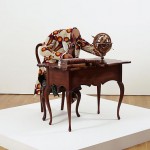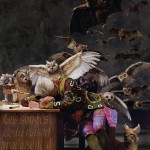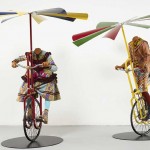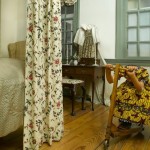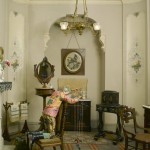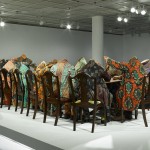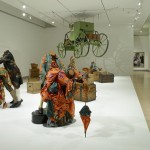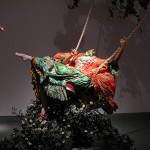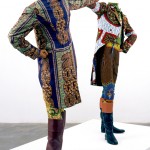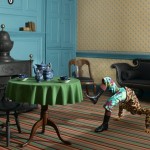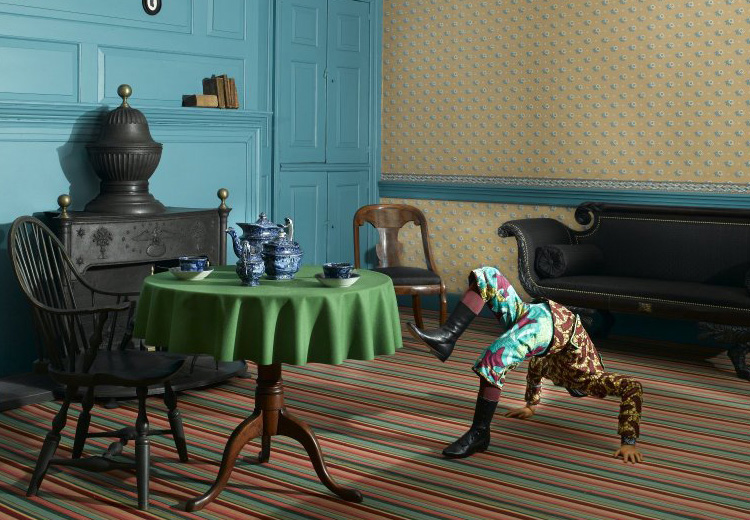Yinka Shonibare MBE is a UK-based Nigerian artist. Shonibare’s artwork explores contemporary African identity and its relationship to European colonialism through painting, sculpture, installation, and moving image. Shonibare is best known for his work with visual symbols, especially the richly patterned Dutch wax fabric produced in Europe for a West African market that he uses in a wide range of applications. His tableaux of headless mannequins costumed in this fabric evoke themes of history and its legacy for future generations. Through these works he explores the complex web of interactions, both economic and racial, that reveal inequalities between the dominant and colonized cultures of Europe, Asia, and Africa.
Yinka Shonibare was born in London to Nigerian parents. At the age of three they moved to Lagos, the most populous city in Nigeria, where he grew up. He spoke Yoruba at home, but only English at his exclusive private school. His father was a successful lawyer, and summers were spent at their Battersea home in London. When Shonibare was 16, he was sent to board in England for his final two years of school education.
At the age of 19 he decided to become an artist, against the wishes of his father. A month into his arts course he became seriously ill with a rare viral infection which attacked his spine and left him temporarily paralysed. He spent much of the next three years in physiotherapy. He is now paralyzed down one side and walks with difficulty using a stick. On his CV he identifies himself as ‘physically disabled’. For some years in the early 90s, he worked for Shape arts, a leading disability arts organisation.
He uses his physical limitations creatively – for example he works on many small scale pieces when making a larger scale artwork. “It’s certainly affected my method,” he comments. “I’ve become very good at delegating and have a number of people who facilitate my priorities.” He involves a professional theatre costumer to make up his dresses and professional photographers when necessary, arranging himself in poses which hide any stiffness of posture.
A key material in Shonibare’s work since 1994 are the brightly coloured ‘African’ fabrics (Dutch wax-printed cotton) that he buys himself from Brixton market in London.
“But actually, the fabrics are not really authentically African the way people think,” says Shonibare. “They prove to have a crossbred cultural background quite of their own. And it’s the fallacy of that signification that I like. It’s the way I view culture—it’s an artificial construct.” (2) Today the main exporters of ‘African’ fabric from Europe are based in Manchester, England and Vlisco from Helmond, the Netherlands.
Sometimes, famous paintings are re-created using headless dummies with the ‘Africanised’ clothing instead of their original costumes, for example Gainsborough’s Mr and Mrs Andrews Without Their Heads (1998),Reverend on Ice (2005) (after The Rev Robert Walker Skating on Duddingston Loch attributed to Sir Henry Raeburn) and The Swing (after Fragonard) (2001). An added layer to the Fragonard piece is that the fabric used is printed with the ‘Dior’ logo (though it is obviously not real Dior fabric).
Shonibare also takes carefully posed photographs and videos recreating famous English paintings or stories from literature e.g., The Rake’s Progress by Hogarth or Dorian Grey by Wilde but with himself taking center stage as an alternative, black English Dandy. Examples of these works are Diary of A Victorian Dandy (1998) and Dorian Gray (2001)
He was nominated for the Turner Prize in 2004 for his exhibition ‘Double Dutch’ at the Museum Boijmans van Beuningen, Rotterdam.
Yinka Shonibare, MBE is represented by Stephen Friedman Gallery, London.
